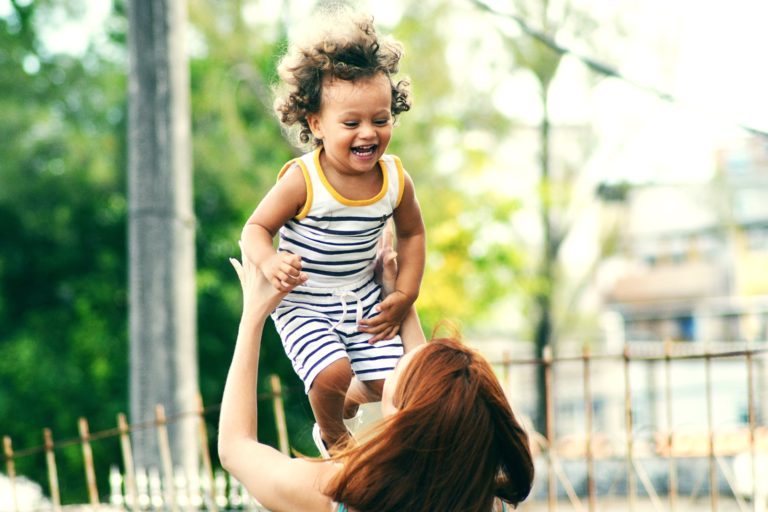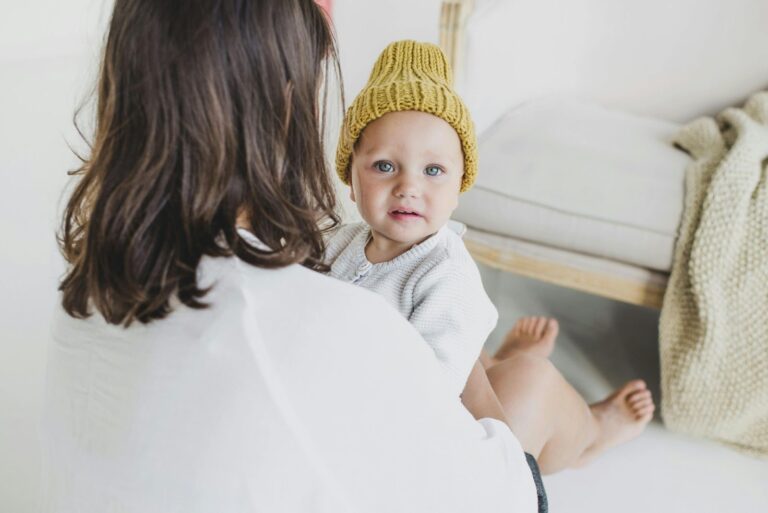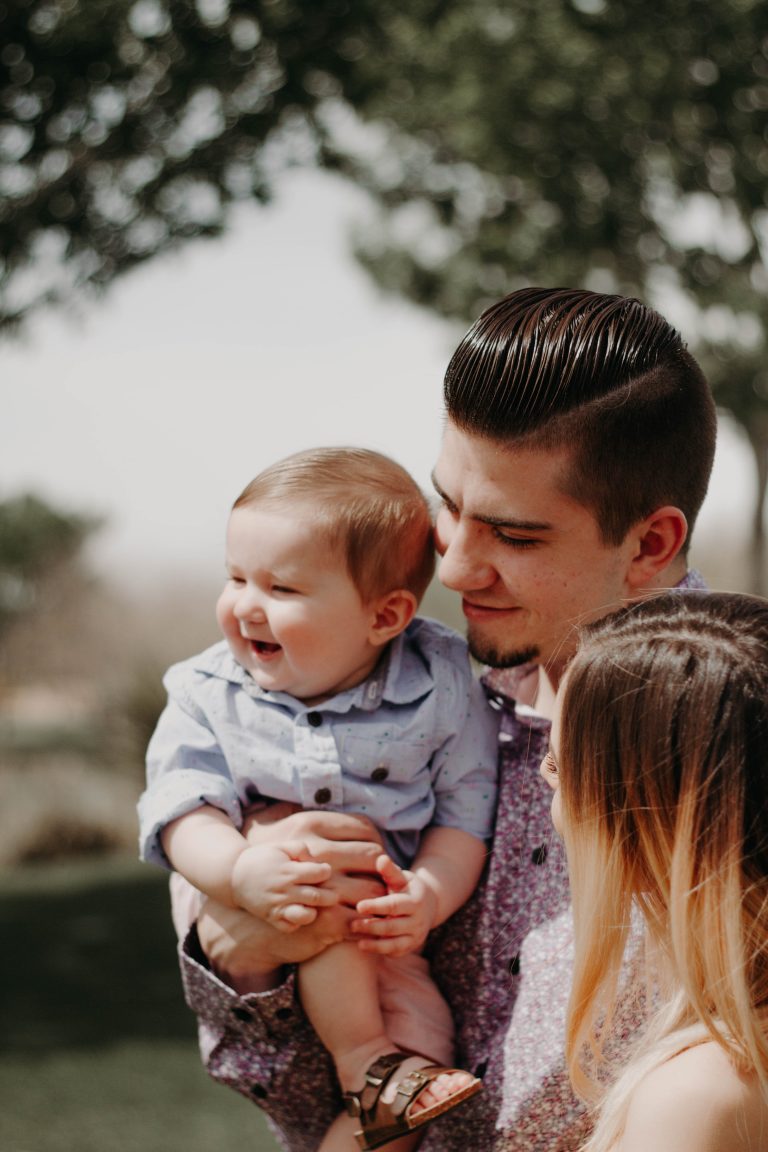How To Get Your Baby Talking: 12 Simple Ways to Boost Your Child’s Early Language Development
8 minute read
From their earliest coos, to their first word, or even first sentence…
As a new parent, you’re probably waiting with great anticipation to hear the magical sound of your baby’s voice. And you may be wondering, “When do babies start talking?”
For some children, talking comes naturally and early. But for others it can take some time. Or they may even prefer or need to use other forms of communication. And that’s ok!
The good news is, there are simple strategies that you can incorporate into your daily life to encourage your child’s early language to blossom and grow.
Whether you have a newborn or a five year old, here are 12 easy strategies that you can start using with your kids today.
Imitate Your Child
Imitation is one of the most important building blocks for language development.
Imitating your child’s actions, gestures, sounds, and words is a great way to show that you are paying attention to your child and “hear” what they are trying to communicate to you — even if it’s not with words yet!
An easy way to start? Copy your child’s actions and look to see if they respond.
You can copy your child by imitating actions with objects — like tapping your hands on a table, shaking a rattle or rolling a car. Or by actions with your body like waving hello when you see a new friend, stomping your feet like an elephant, or blowing a kiss.
If your child says a word like “moo” when they see a cow, pretend to be a cow and moo back! Or say “The cow says moo!”
If your child claps their hands — clap yours too! Or if they are swaying back and forth to a song, mimic their new dance moves!
By copying your little one often, your child may start to expect you to be a “copycat” — watching you and initiating new ways for you to copy them!
Narrate What Your Child is Doing (Like a Sportscaster!)
This is a great tip for parents with newborns! Being exposed to language often and throughout the day is so important for young children. But sometimes it can be hard to know what to talk to your child about — especially if they aren’t talking yet.
When you don’t know what to say, pretend that you are your child’s own personal sportscaster! As your little one goes about their day, describe what they are doing.
If your child is splashing in the bathtub, you can say “Splash, splash, splash! I’m splashing the water!” Or if your child is digging with a shovel, say “Dig! I’m digging a hole!”
You can also talk to your child about what you are doing. If your child needs a new diaper, say “I’m going to change your diaper!” And narrate the steps as you change your little one.
Or if you need to wash your hands… You can say “I’m turning on the water! Let’s get some soap and wash, wash, wash our hands!”
Label objects in your child’s environment. Count the toys they are playing with. Pointing out colors, sizes, shapes, and textures are great ways to teach them new words.
Respond Quickly to Your Child
Pay attention to your child and try to respond to them as quickly as you can. This will encourage them to communicate with you!
Look at your baby when they make a sound. Respond to your little one if they smile or laugh! Listen to them and imitate their sounds, facial expressions, and body movements.
If your baby says, “Ba, ba!” Respond to them by smiling and saying “Ba, ba!” If your child laughs at something funny, laugh with them and say “That’s so silly!”
If your child is pointing to a box of cereal, they are trying to communicate with you! Respond by saying “I want some cereal!”
Or if your child goes over to the front door and tries to turn the knob… Respond with “I want to go outside to play!”
Even if your child can’t talk yet, pretend they are having a conversation with you. Answer your child’s questions (as best you can!) and ask open-ended questions to keep the conversation going.
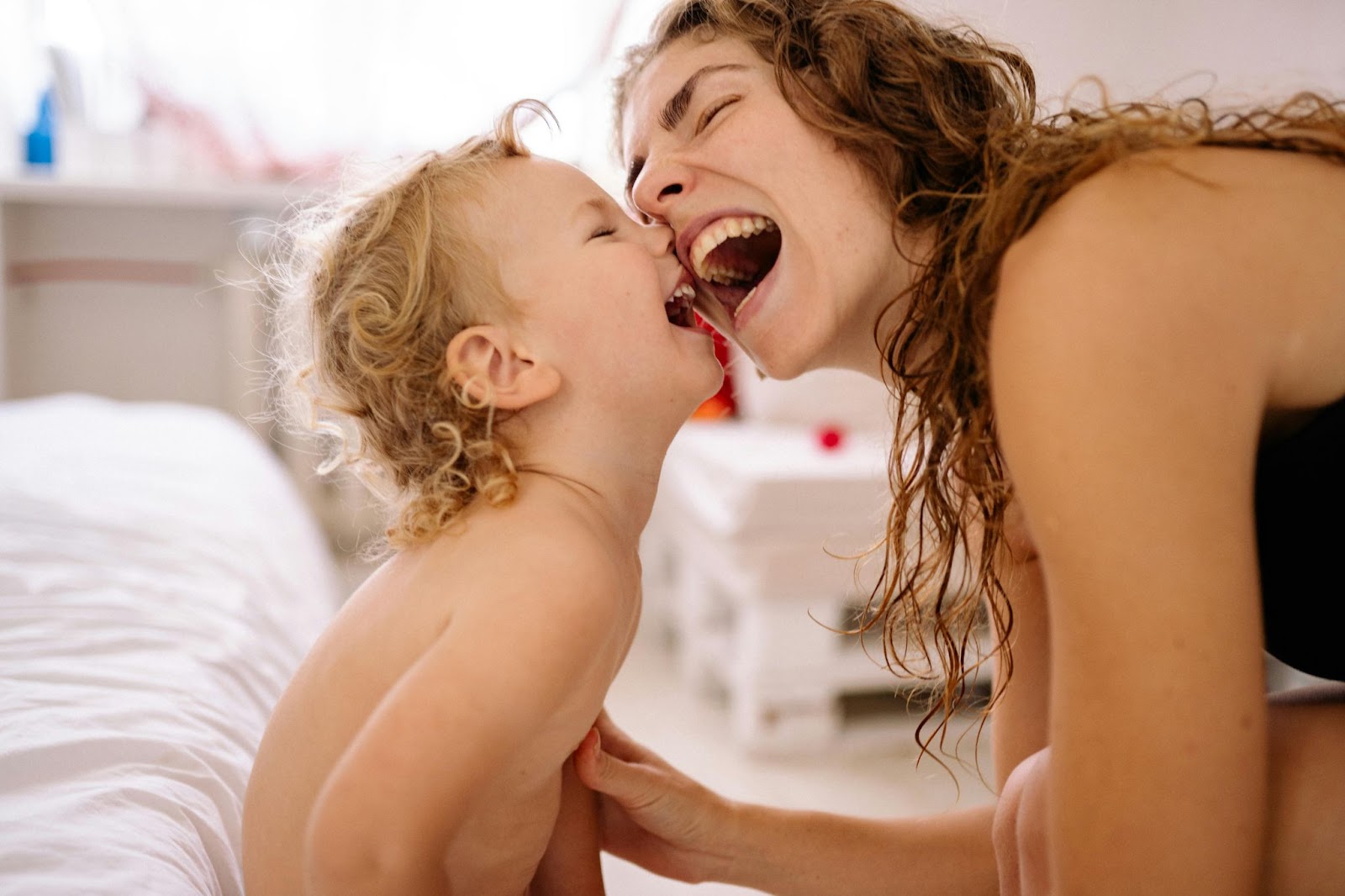 Respond With Interest to Your Child
Respond With Interest to Your Child
The words you say to your little one are important… But it also matters how you say them! Your facial expressions, body language, and tone of voice play a big role in how you communicate with your little one.
Make silly faces, widen your eyes, or shake your head “yes” or “no.”
Use big gestures to “act” out how you’re feeling or what you’re doing. Clap your hands to show that you’re excited. Or bring your hands to your face and “gasp!” to show that you are surprised!
Play peek-a-boo and sing songs with lots of fun gestures like “Row, Row, Row Your Boat,” “The Itsy Bitsy Spider,” and “Wheels on the Bus.”
Act out what’s happening in your little one’s favorite book… Give your child a big, warm hug like Olaf from Disney’s Frozen. Or pretend to eat the apple, strawberries and cherry pie in The Very Hungry Caterpillar.
Mealtime is another great example! If your child is starting to feel hungry, pat your tummy dramatically while saying “I’m hungry!”
When your little one is ready to eat, say, “Let’s go eat!” while pointing to your mouth. Or if you’re trying out Baby Sign Language, use the sign for the word “eat.”
Talk at Your Child’s Level
Adjust your language to meet your child’s learning level to help them understand what you’re communicating. If your baby is just learning to talk, this could mean simplifying your language to one or two word sentences
When interacting with your little one, focus on some of the most common first words for babies like:
- Mama
- Hi
- Dada/Papa
- Yum/Nom
- No
- Bye
- Baba or Baa-Baa
- Boo
- Yes/Yeah
- Ball
Using these words often will help your child recognize the words they can use to communicate with you. You can also use names of the people your child interacts with — like grandma or their music teacher — and label objects in their environment — like their crib, book or bottle.
As your little one gets older, help model new language by expanding on what they say. An easy way to do this is to add one word to what your child said.
When your child says one word like, “Ball.” Respond with two words by saying, “Yes! The yellow ball!”
Or if they say two words, like “Duck quack!” You can respond by saying “The mama duck quacked!”
Pro Tip: Talk with your child face-to-face so that your little one can watch your face as you talk! Your child will watch your lips move as you talk and may imitate you!
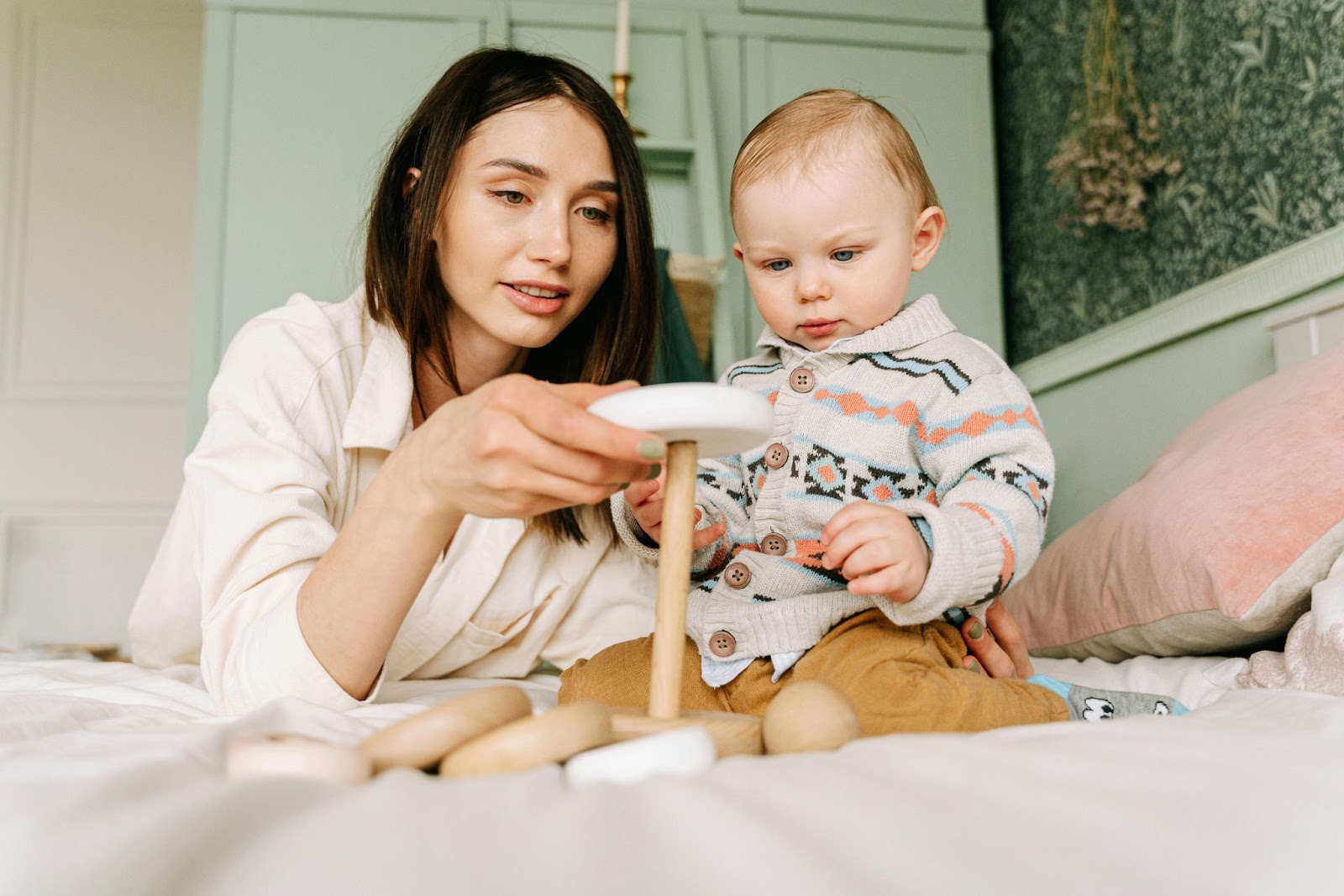 Talk About Your Child’s Interests
Talk About Your Child’s Interests
Using words should be fun for your child! Observe your child as they play and talk about the toys, games, and activities that interest them.
If your little one likes animals, sing “Old MacDonald,” read books about animals, and play with stuffed animals. Or if your child likes nature, go on a nature walk or stroll around the neighborhood and talk about what you see.
If you’re not sure what your child likes to do…That’s ok! An easy topic that is interesting to most children is…themselves!
Use words to describe what your child is doing. If they are building a tower, say “Let’s put a green block on the tower!” Or if they are pushing a car, you can say “The car is going down the road fast!”
As your little one grows, it will become easier to discover what topics they enjoy.
If your little one likes imaginative and pretend play, play along! If your child is pretending to be a cashier at the store, say things like “Welcome to the grocery store!” “I want to buy this apple.” “I’m putting the cereal in the bag.”
Remember, motivation is key when it comes to children. Don’t try to force your child to play with toys that they’re not interested in. Let them freely explore and play at their own pace.
Sing to Your Child
Your baby has listened to the sound of your voice since even before they were born! That’s why your little one loves to hear you talk and even sing to them.
Whether it’s a favorite nursery rhyme or the latest Taylor Swift hit… Many children have an easier time picking up new words through songs.
You can sing some of the songs from your childhood — like the “ABC song”, “Baby Beluga”, or “Twinkle, Twinkle, Little Star”. Or try learning some new kiddo favorites like Ms. Rachel’s “Walking at the Zoo” or singing the theme song from your child’s favorite new show.
Your little one may join you by dancing, humming, or even singing the words with you!
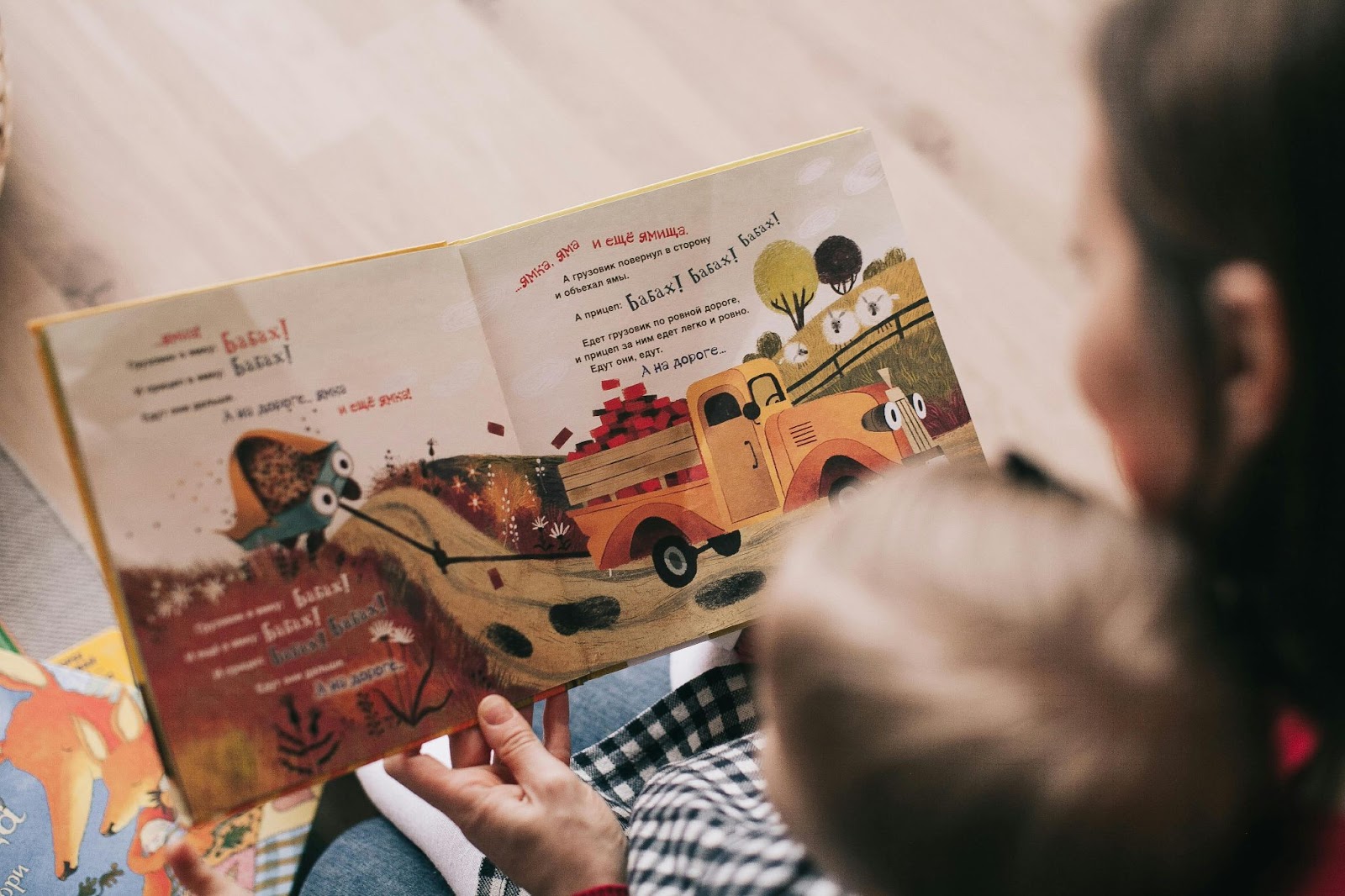 Read to Your Child
Read to Your Child
It’s never too early to start reading to your child! Even if your child is too young to understand the words or follow along with the whole story… Reading is a wonderful way to expose your child to new words.
Just by reading one picture book to your child each day — you’ll expose them to 78,000 words each year!
If you have a newborn, start off with chunky board books with bright, colorful pictures. Your little one will love listening to the sound of your voice and start learning the routine of reading together.
As your child grows, read books that match your child’s interests! From tractors, trucks, and trains…to princesses, pirates, and pigs… There are so many amazing classics to revisit and even more new authors to choose from!
Point to interesting objects in the book and ask your child simple questions, like “Where is the chicken?” Or “What color is the tree?”
And as your little one gets older, you can introduce longer stories and ask more complex questions.
Don’t worry if you feel like you’re reading the same book for the 15th or 100th time. Kids love repetition and may want to hear their favorite story over and over! Your child may even start to fill in some of the words as you read together.
Getting Support to Help Your Child Learn to Talk
For more tips for communicating with children, visit The Hanen Center. They have wonderful resources for parents to help your children expand their vocabulary and communication skills at any age and stage.
The American Speech-Language-Hearing Association also has a great list of activities to encourage speech and language development in children.
If you’re worried that your child isn’t meeting their developmental milestones, talk to your child’s pediatrician. They can connect you with early intervention services to help your child learn new skills.
And remember, you’re not alone! It can be helpful to connect with other parents with kiddos your child’s age.
Try out our Playing With Words Toddler Playgroup, Toddler Storytime Yoga, or Early Communicator Sign Language Class to meet other families while engaging with fun learning activities for your little one.
Be sure to check out our Calendar for dates and times – we frequently add fun new events that the whole family will enjoy!
We’d love to see you! Visit our Boutique at 127 Main Street, Vista, CA. We are open Monday – Saturday: 9:00 am to 4:00 pm.


